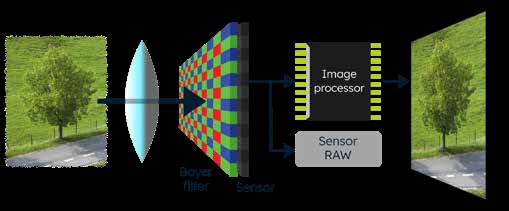Unlocking the Art of Image Sensor Design: A Guide for Engineers
Designing a high-performance image sensor module is more than just selecting components—it’s about ensuring that pixel resolution, lens integration, and thermal management work together in harmony.
These elements are essential for achieving success in fields like machine vision and robotics. Our whitepaper explores strategies to help engineers optimize these interactions. By mastering the balance between board materials, power design, and thermal constraints, you can unlock the full potential of your system, ensuring smooth collaboration with other disciplines during the design process.
The Power of CMOS Sensors: From Light to Data
Did you know that the choice between rolling shutter and global shutter technology can dramatically affect image quality and system performance? CMOS image sensors, which power applications like AR/VR headsets and machine vision cameras, convert optical images into electrical signals and ultimately into digital data.
Rolling shutters expose lines sequentially, making them ideal for static scenes, while global shutters expose the entire pixel array simultaneously, perfect for capturing fast-moving objects.
As shown in the image, light flows through the lens, is captured by the sensor, and processed into a refined digital image—decisions that directly impact accuracy and performance.

Achieving Seamless Integration with CMOS Sensors
To fully unlock the potential of CMOS sensors, it’s crucial to integrate them with the appropriate optical lenses and illumination setups.
Our whitepaper explains how to align these components to ensure flawless results, whether using custom designs or off-the-shelf solutions. With ams OSRAM’s range of CMOS imagers and ambient light sensing solutions, engineers can simplify the sensor integration process, ensuring reliable performance in applications such as biometrics and robotics.
Discover more—download our white paper today and learn how to elevate your imaging systems: White Paper.

